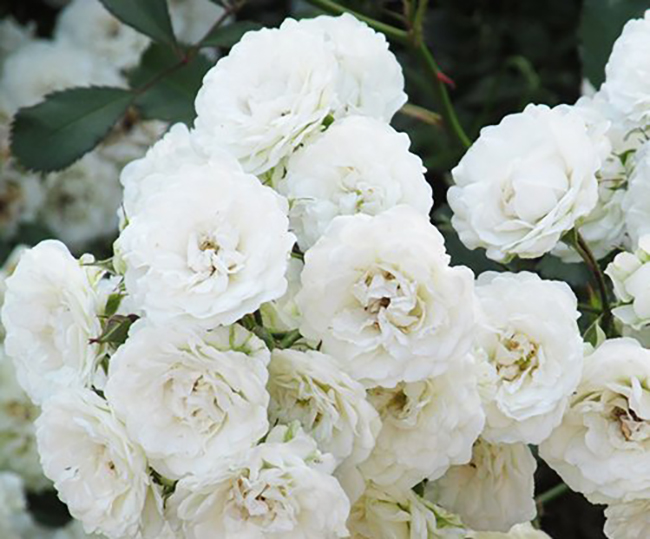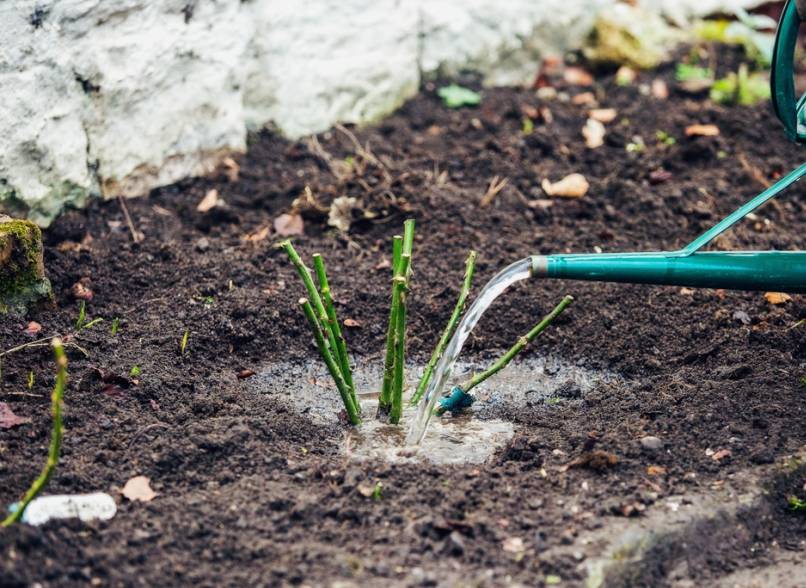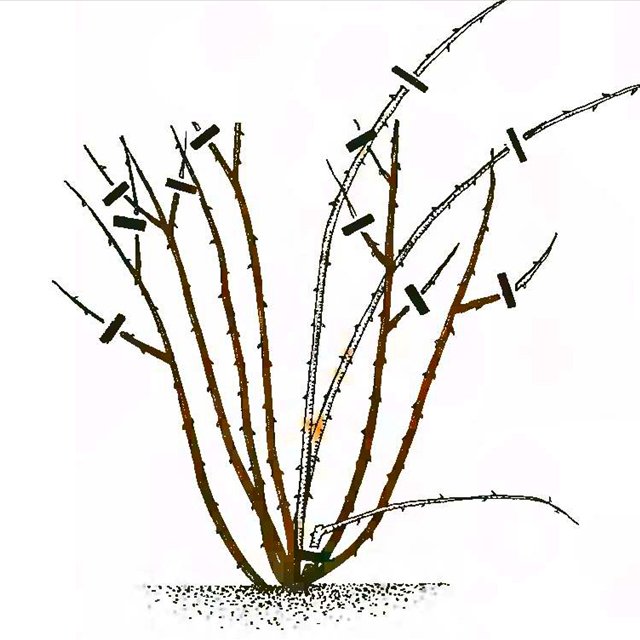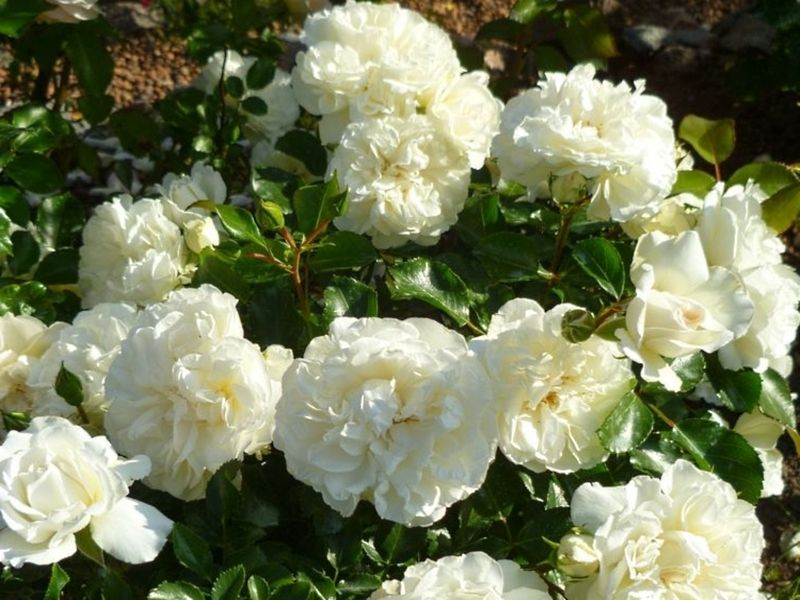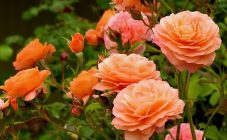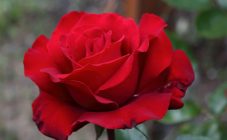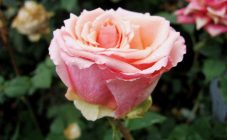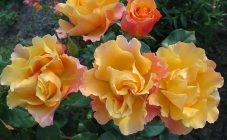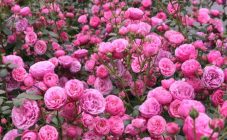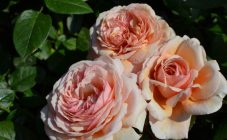Content:
Rosa Alba is a perennial shrub of the Rosehip genus. Belongs to the class of old garden roses of hybrid origin.
According to one version, this class appeared due to the crossing of Gallic roses and Canin roses. It became widespread in the 16th century, but there are earlier references in history. So, based on the description, it was the Alba rose that was chosen as the symbol of the York dynasty during the so-called "War of the Scarlet and White Rose" in the XIV century.
Flowers of this class have many connoisseurs all over the world, but growers give the greatest preference to the Alba roses of the Maxima, Meidiland and Rugosa varieties.
Alba rugoza
Rosa Rugosa Alba, also known as Alba wrinkled rose, gets its name from the characteristic appearance of the leaf blades. Rugosa is a sprawling shrub with straight grayish shoots. The plant adapts easily to changing weather conditions, is very disease resistant and has a long flowering period. The large white flowers have a strong, fragrant aroma and bloom throughout summer and fall.
Alba Meidiland
Rose of the Alba Meillandecor variety - also called Meidiland - is also very unpretentious to care for. It was bred in 1987 and has won two American Rose Society (AARS) awards. It is distinguished by exceptional frost resistance, so it grows well both in warm, humid climates and in colder regions. The bushes are low, about 60-70 centimeters in height, and tend to grow in width, reaching 1.5-2 meters in diameter. Small and smooth leaves are usually dark green with a gray tint. Unlike Rugosa and Maxim, this variety does not bear fruit.
Maidiland blooms from the second half of June until autumn and is very abundant. Terry flowers, small, 3-5 centimeters in diameter, collected in lush inflorescences up to 7-10 flowers in each. They tolerate rain well and do not require pollination. At the end of the flowering period, they disappear by themselves, so there is no need to cut them off. They have a slight unobtrusive aroma.
Care
Planting of this variety in temperate latitudes is usually carried out in spring, in April, in more southern regions - in autumn, in mid-October. Meidiland is not demanding on the soil, it can be planted almost everywhere where the acid-base level is in the range of 5-8 pH. The plant feels great both on the sunny side and in the shade. Great for grafting on a bole.
Watering
This rose does not need increased watering, since it has a high drought resistance. It will be enough to water it weekly with settled water at the rate of one bucket per bush. During rainy periods, you can completely stop watering. Mayandecor is not watered at the beginning of autumn to prepare it for wintering.
Good to know! Roses should not be watered late in the evening and during the day when the sun is at its peak. In the first case, night humidity and temperature changes can provoke the appearance of a fungus. In the second, through drops of moisture, acting on the principle of a lens, the plant can get sunburn.
Wintering
Since the Alba Meyandecor variety is not afraid of frosts, it is not necessary to cover it for the winter. However, this does not apply to standard roses.
To help such a rose overwinter without problems, the roots are gently undermined on one side.The stem is bent to the ground and fixed, tied to the support. In this case, a little free space should remain between the rose and the ground. Cover with spandex or spruce branches after the onset of stable frosts.
Pruning
In the spring, it is worth pruning the plant to get rid of frozen and broken stems. Madeiland recovers very quickly after pruning, so you can thin out the bush without fear of damaging it. Despite the fact that this variety is very slightly susceptible to diseases, such as powdery mildew and black spot, for prevention it will not be superfluous to treat the plant with a 0.5% solution of copper sulfate.
Top dressing
Top dressing is usually carried out once immediately after removing the shelter and twice in the summer, during the budding period and a month and a half before the start of wintering. Fertilizer is applied in liquid form. Before and immediately after fertilizing, the rose must be watered.
Advantages and disadvantages
Pros of the rose Alba Meyandecor:
- immune to diseases and fungi;
- tolerates cold well;
- grows on almost any soil;
- recovers quickly after mechanical damage and trimming;
- suitable for grafting on a stem and creating a hedge;
- has beautiful neat flowers.
Cons of rose Alba Meyandecor:
- can capture the territory of other plants with abundant growth;
- subject to aphids;
- in some cases, dead flowers fall off too slowly.
This is a beautiful undemanding plant that is actively used both in landscape design and for decorating gardens in many countries. With proper care, it can delight the grower with its spectacular appearance for many years.

